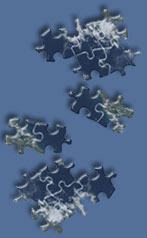
China 2011

China 2011 Home Page
Location
Agenda (html OR pdf)
Software
Pictures
Sponsoring Institutes
DBS home page

2011 IMAPP Training Workshop: Satellite Direct Broadcast for Real-Time Environmental Applications
Location: Eastern China Normal University (ECNU), Shanghai, China
Date: 1-5 June 2011
Workshop Agenda
Day Zero (Question & Answer Session ): Evening (7-9 pm), 31 May 2011
Day One (MODIS): 1 June 2011 Liam Gumley
Introduction to MODIS sensor and Level 1B data
Lecture Session: MODIS sensor and Level 1B data characteristics
- Level 1B (1KM; HKM; QKM)
- Bowtie
Lab Session: Exploring MODIS L1B data in Hydra
- Learning Hydra
- Exploring MODIS L1B using Hydra using ECNU MODIS DB data
Day Two (MODIS Products): 2 June 2011 Kathleen Strabala
Lecture Session: MODIS Level 2 algorithms and products
- MODIS Atmosphere Products
- MODIS Land Products
- MODIS Ocean Products
Lab Session
- Exploring MODIS products using Hydra
Day Three (MODIS Applications): 3 June 2011 Kathleen Strabala
Lecture Session: Applications of MODIS products to local decision making
Weather Observation and Forecasting
- Public Safety
- Fog detection
- Snow/ice detection
- Fire detection
- Severe weather
- Aviation
- Cloud height, cloud composition, cloud temperature
- Turbulence
- Ash detection
- Numerical Weather Prediction (NWP) DBCRAS applications
- Direct Broadcast CIMSS Regional Assimilation System (DBCRAS) NWP
- Freely distributed, globally configurable 72 hour forecasts of meteorological fields centered on user supplied lat/lon
- Improved depiction of cloud and moisture using MODIS products in assimilation
- Unique forecast satellite imagery
- Air Quality
- Aerosol detection
- IDEA-I - Infusing satellite Data into Environmental Applications-International
- Others
- Use of sun glint patterns
- Land Surface Temperatures case study of infestation
Lab Session
- IDEA-I case study
- Exploring DBCRAS using McIDAS-V
Day Four (AIRS & RTTOV): 4 June 2011 Allen Huang
Lecture Session:
AIRS sensor, algorithms, products, and applications and RTTOV
- AIRS measurement principal
- AIRS sounding retrieval theory & algorithm
- AIRS product & application examples
RTTOV
- What is RTTOV?
- Running RTTOV
- Interpreting RTTOV outputs
Lab Session:AIRS Measurement Information Content
Day Five (Class Exercises & Q/A): 5 June 2011
- Creating gridded averages of IMAPP MODIS AOT and TPW products (Liam)
In the morning, the students will work through the process of creating a gridded monthly average of MODIS Aerosol Optical Thickness from the ECNU DBPS (in groups of three). The morning session will be guided by the instructor in a tutorial format. In the afternoon, they will repeat the exercise on their own using the MODIS TPW product, and they will present their results to the group.
Number of Participants: no more than 30
Lab Facility: Enough computers for one for each of three participants (i.e. for 30 participants 10 computers plus two to three backups are optimal)
Reading Assignments:1. Paul Menzel - Application with Meteorological Satellites
2. COMET MODIS training module
3. COMET AIRS training module
Lecturers:
Allen Huang, Liam Gumley, Kathy Strabala and Willem Jacobus Marais